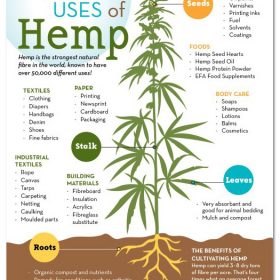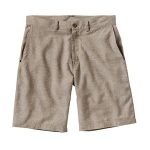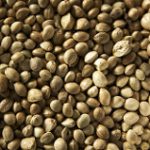If you’re unsure of using Hemp this brief history of the crop should clear the murky waters.
The history of Hemp and it usage dates back to the Stone Age of man as hemp impressions are found in China and Taiwan which are assumed to be over 10,000 years old. These medieval Asian people used this very fiber to make their household items including clothes, shoes, ropes and even paper. The Chinese are credited for the introduction of paper to the world and that very first paper that was manufactured comprised of hemp.
Till the 14th century hemp was the most common material that was used for clothing. Hemp clothes were particularly popular in lower classes of European countries. Every small town in Europe in Dark Age had an access to a heap field. Moreover, hemp clothes were also used as war clothes. The conventional European hemp was not used as a drug because of its low addiction and narcotic content. Despite this fact, it was still cultivated in huge amounts because of its fiber content and traditions prove that it was even used by Christopher Columbus for tying ropes on his ship.
The Spanish are accredited for introducing hemp to the American content as they started the cultivation of hemp in Chile in 1545.The cultivation spread and this new, useful crop got recognition as in May,1607 famous historian Gabriel Archer reported to see hemp cultivation in Powhatan village where Richmond, Virginia at present day stands. Another historian Samuel Argall also claimed this widespread cultivation of hemp which was better than the European version in Upper Potomac. In 1619, an official act of cultivating “Indian and English” hemp was passed by the government of Virginia State. The Puritans are the first known cultivators of hemp in New England. Famous American President George Washington and Thomas Jefferson cultivated hemp on their farms. Another father of the nation, Benjamin Franklin started the first American paper mill, which exclusively used paper as its raw resource.
The era of Napoleon Bonaparte and the French Revolution increased the consumption and production of hemp as it was a main source of military uniforms. The basic reason that hemp was preferred over flax was its added strength, durability and lower cost. These factors override the coarse texture of hemp. United States during the Second World War extensively used hemp as it was used for manufacturing uniforms, ropes and canvas. At that time, Kentucky and Midwest were the major suppliers of hemp. Hemp has contributed greatly to Kentucky’s economy and a large area of Kentucky even today is dedicated for hemp plantation and cultivation.
The hemp market was severely affected at the start of twentieth century as it saw the invention of steam and diesel engine which barricaded the way of sea transportation. As sea transportation was halted, the demand for rope drastically declined. Invention of artificial fibers and synthetic fibers also bought a decline in the demand.
Nowadays, the production of hemp is legally permitted but on a smaller scale because of the discovery of its narcotics effect. The U.S Government permitted a widespread growth of hemp during the Second World War to counter the production of Manila hemp which was grown in Japanese colonies at that time. An American even produced a film on hemp which showed how increased production of hemp led to American victory in World War Two.
Soviet Union before its breakup was the world’s largest producer of hemp during a period that started after the Second World War and ended at its break up. The main production areas of Soviet Union were Ukraine, Krusk and Orel regions. Ukraine has the honor of developing new hemp varieties. The experiments for new varieties of hemp were based on improving fiber quality, per hectare yield and decreasing the THC content.
Most industrialized and developed nations of the world such as Australia, China, Great Britain, Russia, France and Spain are the chief producers of industrial hemp. The only exception is the United States as certain laws don’t allow the production of hemp. France is the leading producer of hemp in Europe with 8,000 hectares reserved for hemp cultivation. Canada and United Kingdom are the two other competitors in line who resumed their production in the 1990’s. In Asia, China is the leading supplier followed by Philippines and Japan. As far as United States is concerned, the production of hemp is banned but some states such as North Dakota, Hawaii, Kentucky, Montana, Maryland, Maine and West Virginia have resisted federal laws and are cultivating industrial hemp.
Segun Olowookere recently started his own clothing company called Lowooke who specialize in designing, producing and distributing a range of clothing aimed at the urban and youth market. The apparel that Lowooke sell is produced using organic materials that have been ethically sourced. You can view their range of Urban Clothing London at http://www.lowooke.com/shop/
Do you use hemp products, let me know in the comments below.










Leave a reply